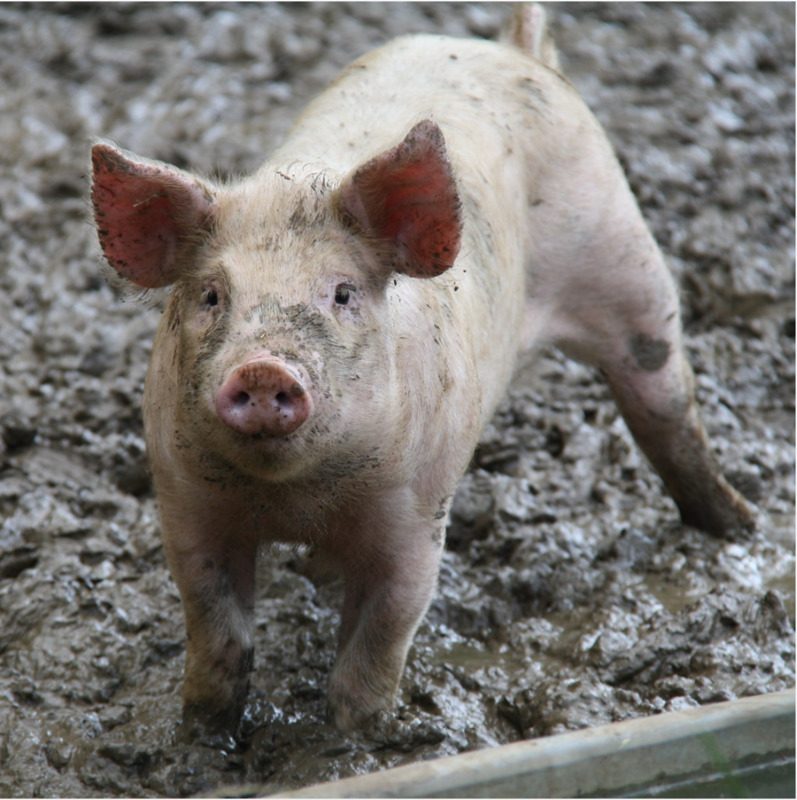Everything You Need to Know About Stereotypies in Pregnant Sows
Item
- Title
- Source
- Contributor
- Creator
- Description
- References
- Date
- Category
-
Everything You Need to Know About Stereotypies in Pregnant Sows
-
ZOOL 567, Fall 2021
-
Powtoon
CIWFeducation, YouTube
climeraj04, Creative Commons
-
Gidluck, Natasha
-
A short video (2:32 min) describing what stereotypes are, why they occur, what they look like in pregnant sows, and ways they can be mitigated. The aim of this dissemination piece is to educate the general public on what stereotypies are and why they are important, as well as provide farmers with mitigation techniques for domestic sows. A video transcript is also provided with in-text citations listed for each slide.
-
Bergeron, R., Bolduc, J., Ramonet, Y., Meunier-Salaün, M. C., & Robert, S. (2000). Feeding motivation and stereotypies in pregnant sows fed increasing levels of fibre and/or food. Applied Animal Behaviour Science, 70(1), 27–40. https://doi.org/10.1016/S0168-1591(00)00142-8.
Bergeron, R., & Gonyou, H. W. (1997). Effects of increasing energy intake and foraging behaviours on the development of stereotypies in pregnant sows. Applied Animal Behaviour Science, 53(4), 259–270. https://doi.org/10.1016/S0168-1591(96)01169-0.
Radkowska, I., Godyn, D., & Fic, K. (2020). Stereotypic behaviour in cattle, pigs and horses — a review. Animal Science Papers and Reports, 38(4), 303-319.
Robert, S., Rushen, J., & Farmer, C. (1997). Both energy content and bulk of food affect stereotypic behaviour, heart rate and feeding motivation of female pigs. Applied Animal Behaviour Science, 54(2–3), 161–171. https://doi.org/10.1016/S0168-1591(97)00067-1.
Spoolder, H. A. M., Burbidge, J. A., Edwards, S. A., Howard Simmins, P., & Lawrence, A. B. (1995). Provision of straw as a foraging substrate reduces the development of excessive chain and bar manipulation in food restricted sows. Applied Animal Behaviour Science, 43(4), 249–262. https://doi.org/10.1016/0168-1591(95)00566-B.
Tatemoto, P., Bernardino, T., Morrone, B., Queiroz, M. R., & Zanella, A. J. (2020). Stereotypic behavior in sows is related to emotionality changes in the offspring. Frontiers in Veterinary Science, 7, 79. https://doi.org/10.3389/fvets.2020.00079.
Terlouw, E. M. C., Lawrence, A. B., & Illius, A. W. (1991). Influences of feeding level and physical restriction on development of stereotypies in sows. Animal Behaviour, 42(6), 981–991. https://doi.org/10.1016/S0003-3472(05)80151-4.
Van der Peet-Schwering, C. M. C., Spoolder, H. A. M., Kemp, B., Binnendijk, G. P., den Hartog, L. A., & Verstegen, M. W. A. (2003). Development of stereotypic behaviour in sows fed a starch diet or a non-starch polysaccharide diet during gestation and lactation over two parities. Applied Animal Behaviour Science, 83(2), 81–97. https://doi.org/10.1016/S0168-1591(03)00112-6.
Whittaker, X., Spoolder, H. A. M., Edwards, S. A., Lawrence, A. B., & Corning, S. (1998). The influence of dietary fibre and the provision of straw on the development of stereotypic behaviour in food restricted pregnant sows. Applied Animal Behaviour Science, 61(2), 89–102. https://doi.org/10.1016/S0168-1591(98)00183-X.
Zhang, M., Li, X., Zhang, X., Liu, H., Li, J., & Bao, J. (2017). Effects of confinement duration and parity on stereotypic behavioral and physiological responses of pregnant sows. Physiology & Behavior, 179, 369–376. https://doi.org/10.1016/j.physbeh.2017.07.015.
-
November 30, 2021
-
Feeding & Foraging
- Item sets
